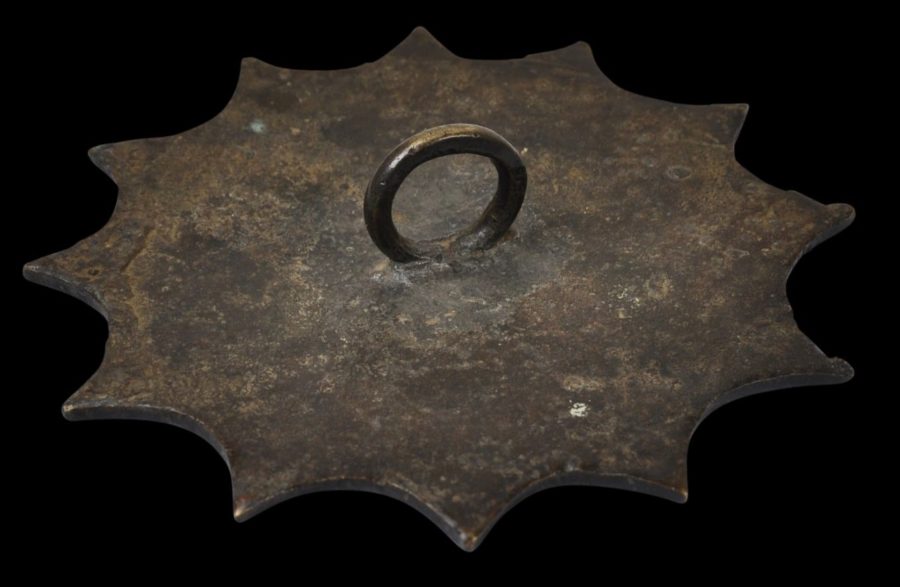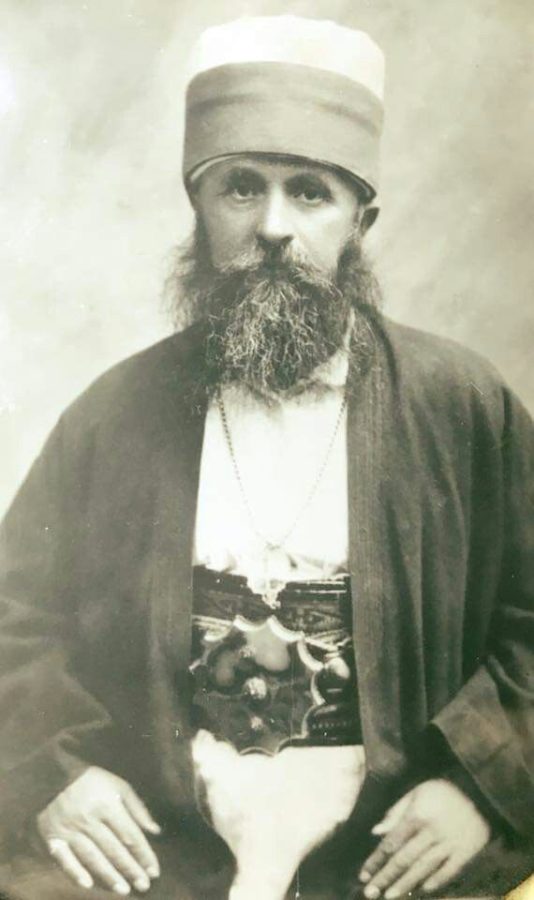This round stamp with twelve points is made of engraved bronze. It is from the Ottoman world (possibly the Balkans or perhaps Ottoman Turkey itself.) It dates to around the 18th century.
Such stamps are rare. Almost none have been published.
The face of the stamp is engraved with talismanic symbols, Koranic-related verses and prayers in the mirror image.
A round metal flange by which to hold the stamp and impress it, is soldered to the back.
It is likely that such stamps were used to print pieces of paper with motifs and Koranic-related verses that will provide the possessors with talismanic protection. Paper so imprinted could be rolled up and kept inside a pendant silver container of similar (known in Arabic as a hirz). Also, it is possible that such stamps were used to imprint textile maybe for use in flags and banners or even talismanic shirts that might have been worn beneath armour, again as a protective device for the wearer.
The form of this example with its twelve points is suggestive of it being associated with the Bektashi Order, a Sunni Sufi order headquartered in Tirana, Albania. Its followers are to be found in the Balkans and central Turkey. The twelve pointed circle is one of the Order’s motifs, and dervishes of the order wear stone pendants that are round but with twelve points. (See the image below which shows this.)
The stamp here combines verses of the Koran with prayers. One prayer, for example, includes the invocation ‘make his heart soft, as you have made steel soft for Daud (David)’.
References
Leonie, F. (ed.)., Power and Protection: Islamic Art and the Supernatural, Ashmolean Museum, 2016.
Maddison, F. & E. Savage-Smith, The Nasser D. Khalili Collection of Islamic Art: Science, Tools & Magic, Part One: Body and Spirit, Mapping the Universe, The Nour Foundation, 1997.
Pers. comm., Seif El Rashidi, London, July 2019.






